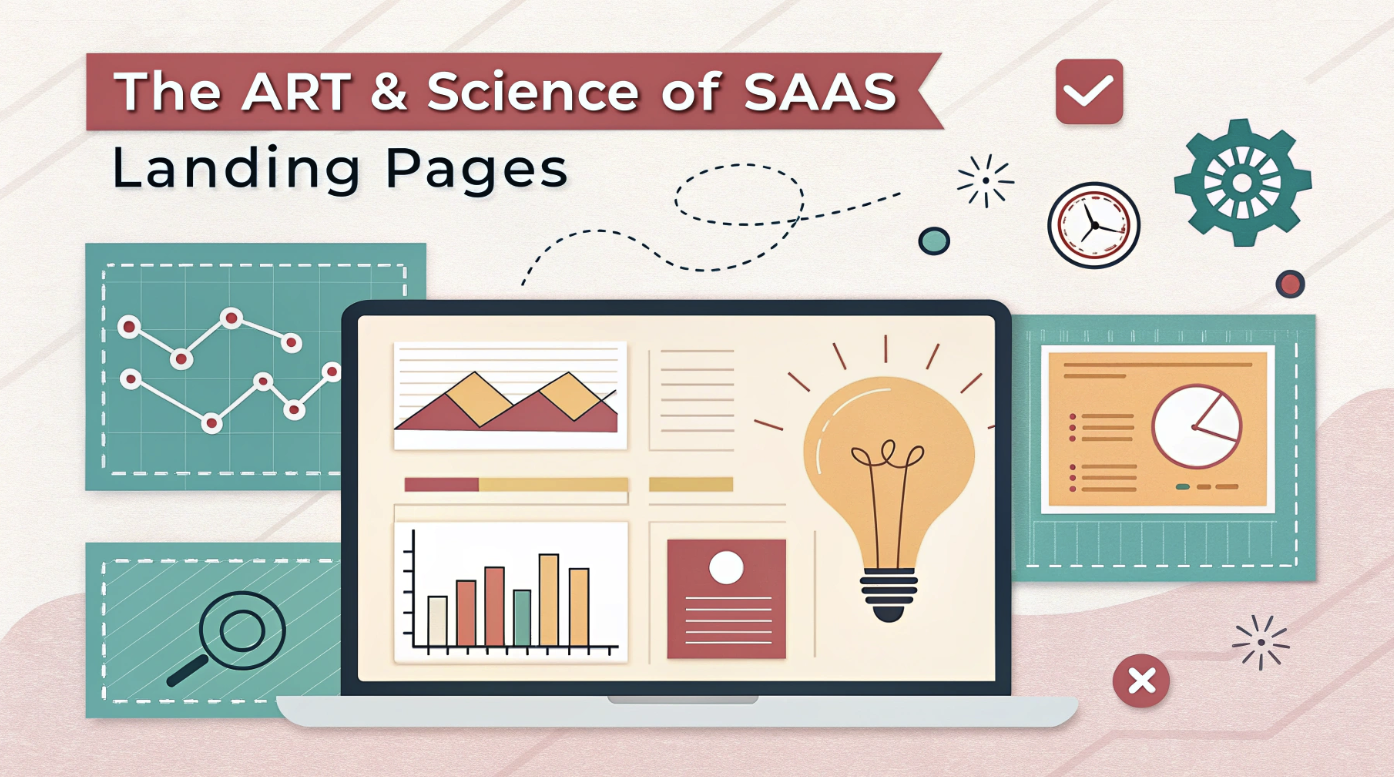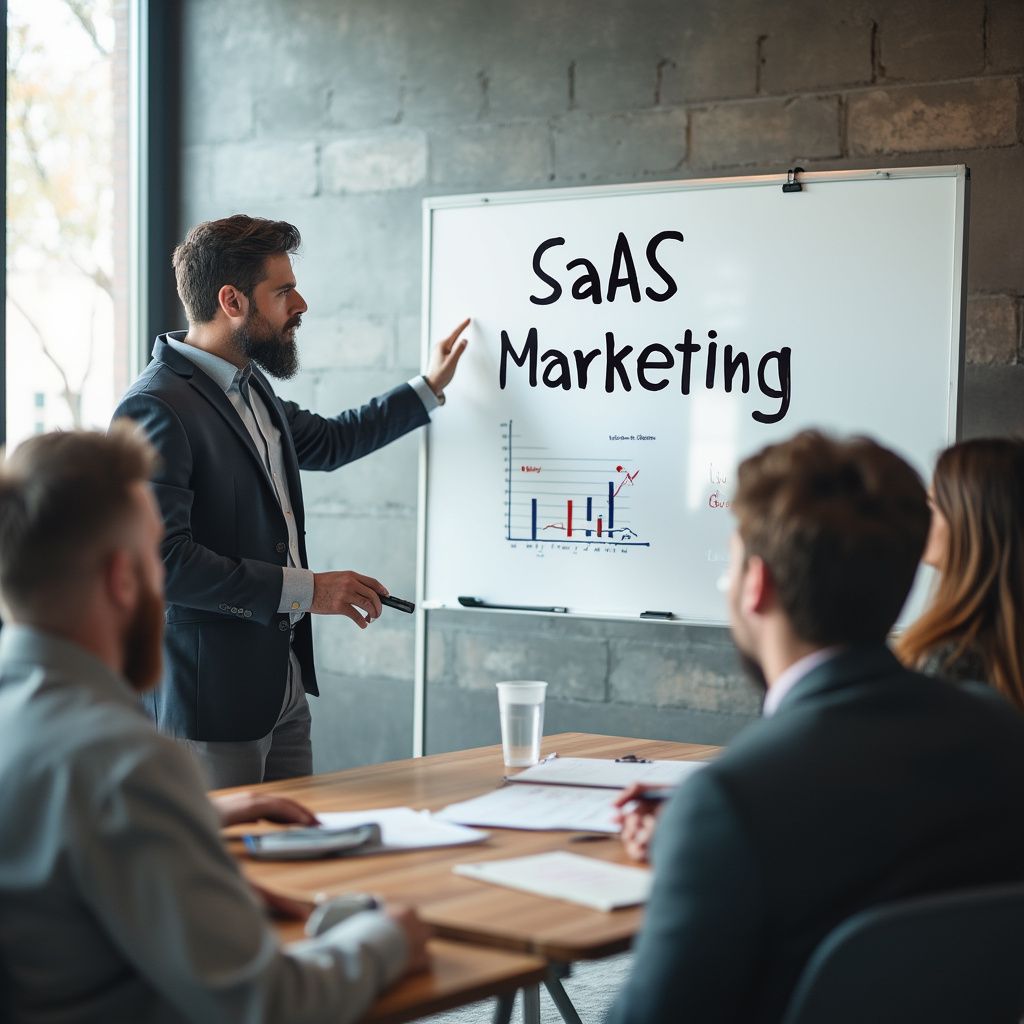
In the current AI-infused era, grabbing attention can be quite a challenge. Your SaaS landing page is often the first warm welcome a potential customer receives from your brand. It’s not just a webpage; it’s a wonderful chance to leave a great first impression.
Let’s explore how you can transform your landing page into a high-converting hub that resonates with your target audience and clearly demonstrates the unique value your SaaS solution offers.
The Foundation: Understanding Landing Page Psychology
At its core, a landing page is a psychological journey. Visitors arrive with questions, doubts, and desires. Your page must address these emotional triggers while guiding them toward a single, clear action.
Think about landing pages as conversations rather than billboards. Every element should contribute to advancing this dialogue toward mutual understanding and, ultimately, agreement.
Key Psychological Principles to Consider:
- Cognitive Load: The human brain can only process so much information at once. Every unnecessary element taxes your visitor’s mental energy.
- Visual Hierarchy: Our eyes follow predictable patterns. Strategic placement guides attention to crucial elements.
- Trust Signals: We seek reassurance before making a commitment. Social proof and credibility indicators reduce perceived risk.
Essential Components of High-Converting SaaS Landing Pages
1. The Hero Section: Your Digital First Impression
Imagine your hero section as the opening line of a compelling story. It should immediately answer three questions:
- What exactly does your solution do?
- Who is it for?
- Why should visitors care?
Your headline must capture attention while communicating value. Pair it with a subheadline that elaborates on your primary benefit.
Headline Formula Structure:
[Action Verb] + [Desirable Outcome] + [Timeframe/Ease] + [Without Negative Consequence]
2. Value Proposition: The Heart of Your Message
Your value proposition should articulate what makes your SaaS solution uniquely valuable. It’s not about features—it’s about transformation.
Consider framing your value proposition around:
- The status quo problem your visitors face
- The desired future state they aspire to reach
- How your solution bridges this gap uniquely
3. Benefits vs. Features: Speaking to Desires, Not Specifications
Features tell; benefits sell. While your development team cares deeply about technical specifications, your visitors care about outcomes.
Feature-to-Benefit Translation:
For every feature, ask “so what?” until you reach the emotional benefit. For example:
Feature: Automated reporting
Benefit: Reclaim hours each week while gaining deeper insights without manual data processing
4. Social Proof: Letting Others Tell Your Story
We naturally look to others when making decisions. Effective social proof creates a “consensus effect” that validates your claims.
Consider incorporating:
- Testimonial snippets highlighting specific outcomes
- Recognition symbols (awards, press mentions)
- Integration logos showing compatibility with trusted tools
- Customer logos (with permission) demonstrating market trust
Design Principles for SaaS Landing Pages
Visual Hierarchy: Directing the Visitor’s Journey
Think of your page as a visual roadmap with deliberate signposts. Each element should guide visitors toward your call-to-action.
Consider how:
- Size signifies importance
- Color creates emphasis and emotional tone
- White space provides visual breathing room
- Directional cues (arrows, gazes, pointing) subtly guide attention
Responsive Design: Meeting Users Where They Are
Your landing page must perform flawlessly across all devices. This isn’t merely a technical requirement—it’s about respecting your visitors’ preferences.
Mobile Optimization Tips:
- Simplify navigation for thumb-friendly browsing
- Increase button sizes for touch accuracy
- Reduce form fields to minimize mobile typing
- Ensure readable font sizes without zooming
- Test loading speed on various connection types
Conversion Elements: Turning Interest Into Action
Crafting Irresistible Calls-to-Action
Your CTA is the culmination of your landing page’s persuasive journey. It should feel like the natural next step, not a high-pressure demand.
Effective CTAs often:
- Use action-oriented verbs that imply value
- Create urgency without manipulation
- Stand out visually while maintaining design harmony
- Reinforce the low-risk nature of the next step
Form Optimization: Reducing Friction
Every form field represents potential friction. The art lies in collecting only what’s necessary for your specific conversion goal.
Form Design Principles:
- Match form length to the perceived value of your offer
- Consider multi-step forms to reduce perceived complexity
- Use inline validation to provide immediate feedback
- Clearly mark optional fields (or better, eliminate them)
Pricing Strategy: Communicating Value Before Cost
If your landing page includes pricing information, position it as an investment rather than an expense. The perceived value should be established before the price is revealed.
Consider:
- Anchoring higher-tier plans to make your target plan appear more reasonable
- Highlighting the most popular option to leverage social proof
- Using value-based metrics (“$X per user/month” rather than abstract totals)
- Emphasizing what’s included rather than focusing on limitations
Testing and Optimization: The Continuous Improvement Cycle
What to Test: Moving Beyond Guesswork
Effective testing requires clear hypotheses. Rather than randomly changing elements, formulate specific questions about your visitors’ behavior.
Common testing opportunities include:
- Value proposition messaging and framing
- CTA placement, design, and wording
- Social proof format and positioning
- Form length and information sequence
- Visual hierarchy and attention flow
Interpreting Results: Beyond Surface Metrics
Look beyond conversion rates to understand the qualitative aspects of visitor behavior. Heat maps, session recordings, and post-conversion surveys can reveal the “why” behind your metrics.
Holistic Measurement Questions:
- Are visitors engaging with key persuasive elements?
- Where do they hesitate or abandon the process?
- Which visitor segments respond differently to your page?
- What questions arise during the conversion process?
Advanced Techniques: Elevating Your Landing Page Strategy
Personalization: Tailoring the Experience
Imagine if your landing page could adapt to each visitor’s specific context and needs. With modern tools, this is increasingly possible.
Consider personalizing based on:
- Referral source (tailoring messaging to match the visitor’s origin)
- Return visits (acknowledging previous engagement)
- Industry or role (when identifiable)
- Geographical location (addressing regional concerns or opportunities)
Storytelling: Creating Emotional Connection
Stories bypass rational defenses and connect directly with our emotional decision-making centers. Your landing page can leverage narrative structure to create a more compelling experience.
Consider the classic story arc:
- Status quo (the visitor’s current situation)
- Conflict (the problem or pain point)
- Resolution (how your solution transforms their situation)
- New reality (the improved future state)
Final Thoughts: Your Landing Page as a Living Document
The most successful SaaS landing pages evolve continuously. They respond to changing market conditions, visitor feedback, and emerging opportunities.
View your landing page not as a static document but as an ongoing conversation with your potential customers—one that grows more insightful and effective with each interaction.
By combining psychological principles with strategic design and continuous refinement, your SaaS landing page can become far more than a digital brochure. It can serve as a powerful conversion engine that authentically connects your solution with the people who need it most.
Reflection Questions for Your Landing Page Strategy:
- Does every element on your page serve a clear purpose in advancing the visitor toward conversion?
- How effectively does your page address the emotional and practical needs of your ideal customer?
- What objections or questions might remain unanswered in your current presentation?
- How could you create a more seamless connection between your visitor’s arrival context and their next step?



